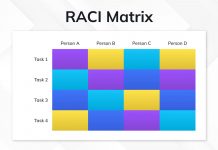
Performing Integrated Change Control Process is an important process that is executed under the Integration Management Knowledge area and Monitoring and Controlling Process group. The reason it’s called ‘Integrated’ is that this is the process where the impact of any change is assessed against the project. An important thing to note is that, if a change occurs in one part of the project, it needs to be assessed across the whole of the project.
As the project manager continually measures the project against the Project Management plan under the Monitor and Control Project Process, changes are an obvious outcome. Concerning this, a common question will always come up i.e if changes were transpiring during the project lifecycle? how does one decide on which changes are essential and which are not? Which are to be performed and which are to be skipped? This is when the Perform Integrated Changes Control process comes into the picture.
Perform Integrated Change Control – Inputs
The inputs in the integrated change control process will consist of the following:
- Project Management Plan
- Project Documents
- Work Performance Reports
- Change Requests
- Enterprise Environmental Factors
- Organizational Process Assets
Let’s take a look at them and understand how they will be involved while performing integrated change control.
Project Management Plan
A formal, approved document used to manage project execution. It documents the actions necessary to define, prepare, integrate and coordinate the various planning activities. It also explains how the project is executed, monitored and controlled, and closed.
The elements of the Project Management Plan that can be used include:
-
- Change Management Plan: The process which provides guidelines for managing the change control process and records the roles and responsibilities of the change control board.
- Configuration Management Plan: The process of the Configuration Management plan documents how configuration management will be performed. It defines those items that are configurable, those that require formal change control, and the process for controlling changes to such issues.
- Scope Baseline: Every project has a scope, and this process of scope baseline is what defines the project and product.
- Schedule Baseline: All the tasks and processes related to the project have a fixed schedule within which they have to be accomplished, and the completed tasks are then compared based on the schedule baseline.
- Cost Baseline: During the process of performing integrated changes to the project, the cost baseline is what helps the project manager to assess the impact of the changes on the project’s actual cost.
Project Documents
Project documents that can be considered as inputs for this process include but are not limited to:
-
- Basis of Estimates: The Basis of estimates method indicates how the project’s duration, cost, and resource estimates were derived and how they can be used to calculate the impact of the change in time, budget, and resources.
- Requirements Traceability Matrix: The requirements traceability matrix process helps assess the impact of the change in the project scope.
- Risk Report: The risk report presents information on sources of overall and individual project risks involved in the change requested.
Work Performance Reports
The work performance information/reports should be distributed with the monotonous collection of data, including schedule progress, subsequent delays and their causes, critical path activities, activities presenting delays, actions for recovery, and other vital data for managing the work. On whole, a physical representation of work performance information compiled in project documents is intended to generate decisions, actions, and recommendations.
Work performance reports for the Perform Integrated Change Control process include reports on:
-
- Resource availability
- Schedule and cost data
- Earned value management (EVM) reports
- Burn up or burn down charts
Change Requests
The Monitoring and Controlling processes along with the Executing processes produce numerous change requests as an output. The Change requests may include;
-
- Corrective action
- Preventive action
- Defect repairs
However, the project baselines are not affected by taking up the corrective and preventive action, but only the project performance against the benchmarks will witness changes.
Enterprise Environmental Factors
Concerning the Perform Integrated Change Control process, Project Management Information System is the only enterprise environmental factor. As the PMIS includes scheduling tools, configuration management systems, information collection, and distribution systems, an integrated change will have an impact on all the processes that come under PMIS.
Organizational Process Assets
The Perform Integrated Change Control process will influence the change control procedures, along with the steps that modify the organizational standards, policies, plans, and project documents. It will also allow recording of how the changes are approved, validated, and implemented.
The PICC process will also be influenced by the methods used for approving and issuing change authorizations. The PICC process will be affected by the process measurement database that is used to collect and make available measurement data on processes and products.
Perform Integrated Change Control – Tools and Techniques
The various tools and techniques in the integrated change control process are as follows:
- Expert Judgement
- Meetings
- Change Control Tools
- Decision Making
- Data Analysis
Let’s take a look at them in detail.
Expert Judgment
An expert judgment may consist of opinions and advice from Project Management teams along with stakeholders’ expertise. The stakeholders may also be asked to take positions on the change control board. These judgments and knowledge are applied to all technical and management levels during the – Perform Integrated Change Control Process.
Meetings
In the case of the Perform Integrated Change Control process, meetings are usually referred to as change control meetings. A change control board (CCB) is responsible for meeting and reviewing the change requests along with the task of approving and rejecting any changes in the project. Appropriate stakeholders define and accept the roles and responsibilities, and the same are documented in the change management plan. The decisions taken by the Change Control board are documented and communicated to the stakeholders as a form of information.
Change Control Tools
One of the essential features of Changes is that it can help ensure that the project is appropriately aligned with the needs of the organization. Change control is considered a critical process in Project Management. It provides that all changes proposed during the project are defined, reviewed as well as approved before they are even implemented into the project. Change Control under Perform Integrated Change Control avoids all unnecessary changes that can disrupt the project. Moreover, it also ensures that the changes will not affect the resources.
Change control tools should support the following configuration management activities:
Identify Configuration Item
The process of identifying and selecting a configuration item to provide its basis after which the product configuration is defined and verified, documents are labeled, changes are managed, and accountability is maintained.
Record and Report Configuration Item Status
The process where the information of each configuration item is recorded and reported.
Configuration Item Verification and Audit
Configuration verification and audits ensure that the composition of a project’s configuration items is correct and that the corresponding changes are registered, assessed, approved, tracked, and correctly implemented. This process ensures that the functional requirements defined in the configuration documentation are achieved.
The tools mentioned above should support the following change management activities as well:
-
- Identify Changes – The activity of identifying and selecting a change item for processes or project documents.
- Document Changes – The process of documenting the change that occurred in the project into a proper change request.
- Decide on Changes – This particular process helps in reviewing the changes; approving, rejecting, deferring, or making any other decision about changes to the project documents, deliverables, or baselines.
- Track Changes – The process of verifying that the executed changes are registered, assessed, approved, and tracked and communicating the final results to the project stakeholders.
Decision Making
Decision-making techniques that can be used for this process include but are not limited to:
-
- Voting: The process of voting can take many forms, and some of them are unanimity, majority, or plurality to decide on whether or not to accept, defer, or reject the change requests necessary for the project.
- Autocratic Decision Making: In this decision-making technique, one individual takes complete responsibility for deciding on behalf of the entire group which would benefit the project outcome.
- Multi-criteria Decision Analysis: A technique that uses a decision matrix to provide a systematic analytical approach to evaluate and monitor the requested changes according to a set of predefined criteria.
Data Analysis
Data analysis techniques that can be used for this process include:
-
- Alternatives Analysis: This technique is used to determine the requested changes and decide which are accepted, rejected, or required to be modified to be finally approved.
- Cost-benefit Analysis: This analysis helps to assess if the requested change is worth its associated cost.
Perform Integrated Change Control – Outputs
The outputs in the integrated change control process are as follows:
- Approved Change Requests
- Change-log
- Project Management Plan Updates
- Project Document Updates
Let’s take a look at how these are done while performing integrated change control.
Approved Change Requests
Approved Change Requests are the changes that are requested by the Project Manager. These changes are reviewed and approved by the Change Control Board, through the process of Integrated Change Control for implementation. Approved Change Requests can take place at any stage of the project (For example, during the early stages of the project, changes can occur in the form of – Change in a contractor, change in relocation, or change in the design).
Change-Log
For every project, a project manager maintains a change log to register or document changes that occur in a project. Registering changes and their impact on the given project regarding time, cost, and risk is communicated to the stakeholders.
Project Management Plan Updates
Features or components of the Project Management Plan that are updated and influenced through the Perform Integrated Change Control process are – The Scope Management Plan (the procedures for scope changes) and Scope baseline (product definition).
Project Documents Updates
All documents that are considered part of the formal change control process are updated.
Conclusion
The Perform Integrated Change Control Process helps in segregating the critical changes from the possible ones. Through the implementation of integrated changes, the scope of the project will increase drastically and produce a better output. Establishing a Change Control Board to review and approve the changes requested will help a smooth process of deploying changes and most importantly document all the changes that are made and process them to pass them on to the key stakeholders as information. Enhance your skills and learn more about such practices in project management with the PMP Certification Training Online Courses.
Know more about Project Management best practices through Invensis Learning’s Project Management certification training on PMP Certification, CAPM Certification Courses, PRINCE2, Project Management Fundamentals, etc.















